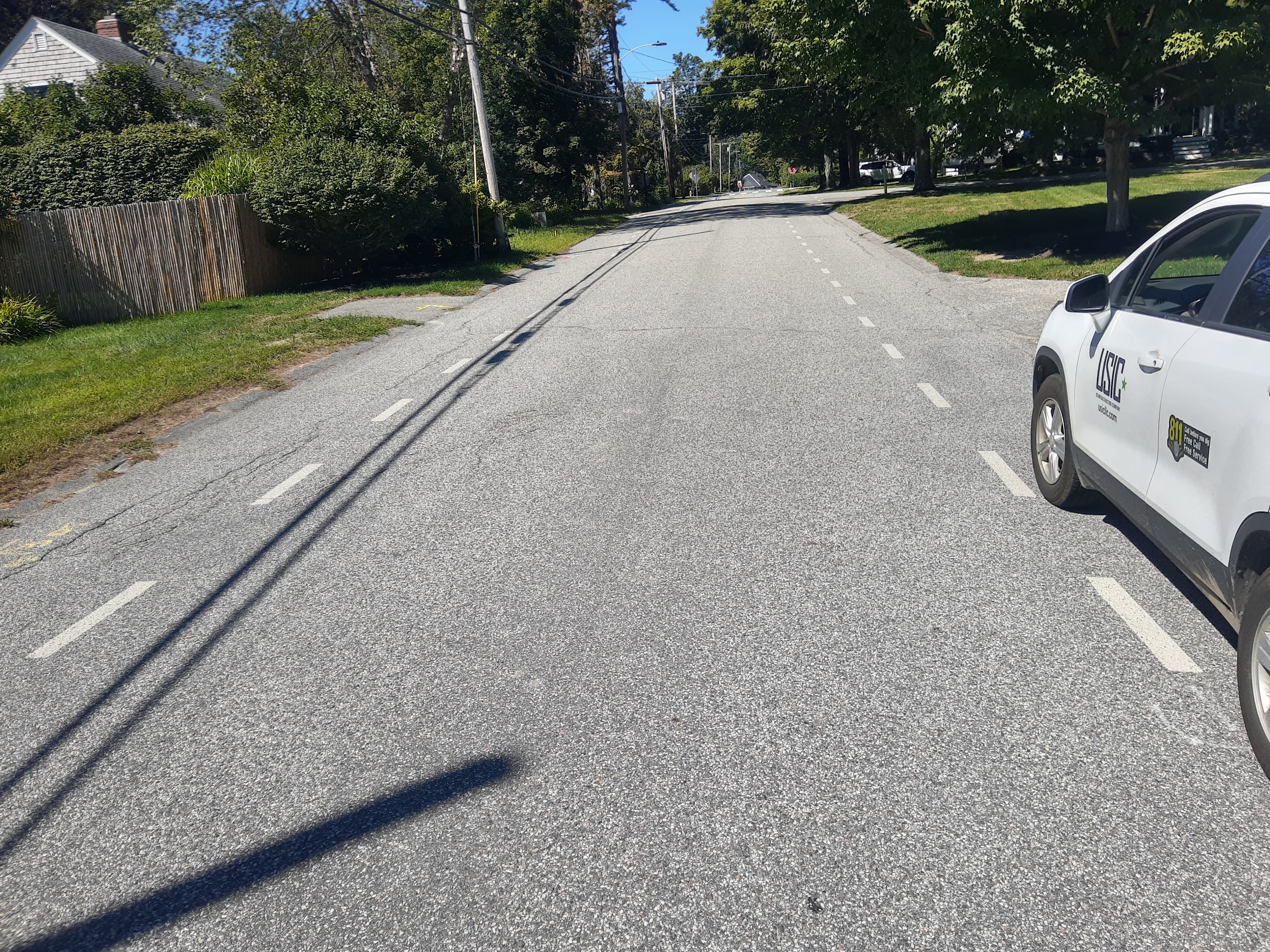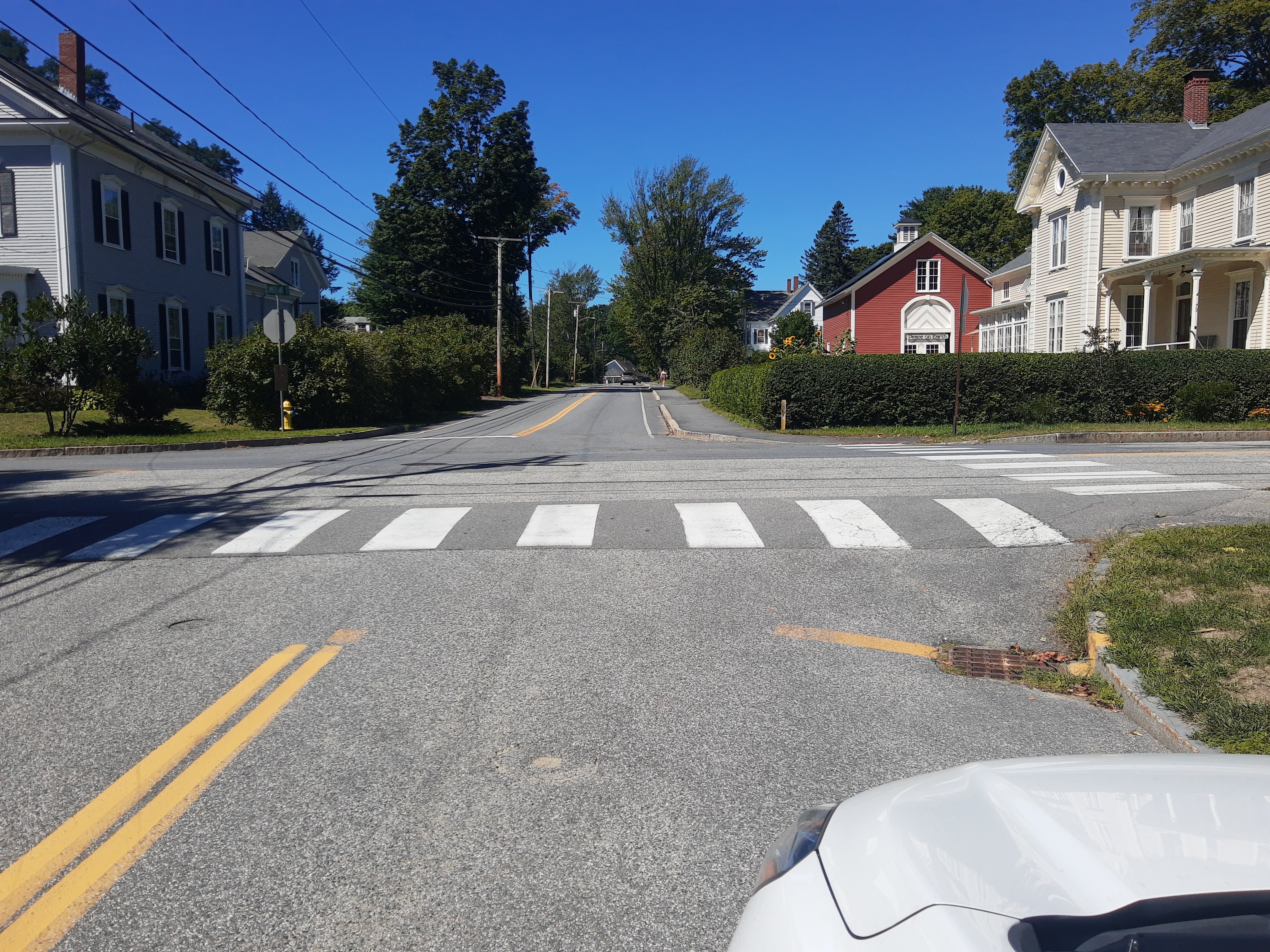PPH: New traffic pattern sparks confusion in Deering Center
8 views
Skip to first unread message
Scsmedia
Aug 23, 2022, 8:46:38 AM8/23/22
to pb...@googlegroups.com
Maya
Congratulations on getting above the fold in the Portland Press Herald. Hard to do with out doing something bad.
Jeremiah's second response to me indicated that they intended to dig in their heals and not make any changes to the sign.
The committee needs to send a stern letter to the city requesting the correct signage and markings on the street.
The public works department hung notices on the doors of homes in the area and communicated with the head of the neighborhood association and some residents, Grondin said.
Except they did not communicate with the head of the neighborhood assn or else this would not be a front page article.
Steven Scharf
BUSINESS
Posted
INCREASE FONT SIZE

New traffic pattern sparks confusion in Deering Center
New lane striping is intended to reduce speeding on Ludlow Street, but the unfamiliar pattern and limited public outreach about the "advisory bike lanes" have befuddled residents and commuters.

Portland is trying out a new traffic design in hopes of slowing drivers and improving safety on a residential street, but the unfamiliar lane markings have left some people scratching their heads.
Maya Lena was bicycling on her regular Ludlow Street route this month when she noticed the strange new road striping on Deering Center street.
Two new lines of white dashes were painted on the asphalt, creating two bike lanes next to the shoulder and a single travel lane for cars in the center of the two-way street.
The striping, which extends about half a mile between Fuller Street and Wayside Road, perplexed Lena. What was it for? And how should drivers, cyclists and pedestrians approach it? She wasn’t the only one with questions.
“I got home and got a text from a neighbor that was just ‘What is this?'” said Lena, president of the Nason’s Corner Neighborhood Association.
The new traffic lines form what is called “advisory bike lanes,” a design intended to slow vehicular traffic and give pedestrians and cyclists designated space on the roadway.
This is how it works: Bicycles have designated space in the wide shoulder lanes, while motor vehicles use a central travel lane. When vehicles encounter oncoming traffic, they move right into the shoulder lanes to pass, while yielding to bicycles and pedestrians, and then return to the center travel lane.
Advisory bike lanes have been painted on narrow, low-speed streets in cities around the world. The lanes have improved safety on streets with low and moderate traffic, but they are unconventional and unfamiliar to motorists and bicyclists. It can take a while for all road users to understand and become comfortable with sharing road space and using a single two-way travel lane for motor vehicles.
So the fact there has been limited public outreach or education about the new traffic system hasn’t helped. The city was not required to hold a public meeting about its plans and outreach about the new traffic pattern has been confined to nearby residents and the head of a community group.
CONFLICT BETWEEN SIGNS AND STENCILS
“The city did put up some signs, but they are not in agreement with what the (bike share) stenciling is on the road; it is a little confusing,” Lena said of the cyclist silhouettes that were painted in the center travel lane. Typically, they would appear in the shoulder lane designated for cyclists.
There should be an effort to “educate drivers about how to use this because it is not commonplace and it is new to people and I don’t think there has been any public outreach,” she said.
Neighborhood residents have been asking Portland city officials to do something about vehicle speed on Ludlow Street for at least a year. Construction work on nearby Brighton Avenue last year shifted more traffic, and some faster drivers, onto the residential road, Lena said.
The city installed the advisory lanes to address those concerns. It painted the new stripes as a pilot project and may extend the striping to more of the street if it succeeds and reduces speeds and crashes, Portland transportation engineer Jeremiah Bartlett said in an email to Lena.
Despite residents’ traffic concerns, Ludlow Street did not have enough speeding vehicles or crashes to qualify for physical traffic calming devices such as speed bumps, so advisory lanes were installed instead, Bartlett said. And because it didn’t meet the threshold to install speed bumps or similar measures, the city also wasn’t required to hold public meetings about its plans, spokeswoman Jessica Grondin said.
The public works department hung notices on the doors of homes in the area and communicated with the head of the neighborhood association and some residents, Grondin said.
EDUCATION AND OUTREACH ARE KEY
Advisory lanes such as the ones Portland is experimenting with are being tried out in other communities, as well. But at least some other communities, as well as cities in other states, have extensive education efforts first.
Dan Ostrye, former chairman of the bicycle-pedestrian committee in Yarmouth, helped the town install its first advisory lanes on a street popular with walkers and cyclists in 2016. It has since expanded the program to six streets with more planned.

The town of Camden posted this graphic to help motorists and bicyclists know how to navigate advisory bike lanes.
A lack of public engagement can sink attempts to install advisory lanes, he said.
Clear communication with residents and neighbors was key to success each time, Ostrye said. Not everyone was in support and education was needed to prepare them for the unfamiliar pattern, he said.
“It is important to over-communicate with the public, you are not going to get 100 percent support but at least people don’t feel you have sprung it on them,” he said.
At the same time, the unfamiliarity of a new striping layout may also help make streets safer by forcing drivers to slow down, Ostrye added.
“You are going to do the right thing no matter what, because no one wants to hit a cyclist and pedestrian or another car,” he said. “Our brains are conditioned – when you have ambiguity, you tend to slow down and tend to be more cautious. We have seen that time and again with these installations.”
Maya Lena
Aug 23, 2022, 9:46:44 AM8/23/22
to PB...@googlegroups.com
I just want to clarify, that this section is not in Nason’s Corner, so I would not have been the contact for this installation. But, to my knowledge, DCNA was not notified either.
Unfortunately, I don’t think this article helped to clarify what drivers and cyclists are supposed to do here. They are saying that the shoulders are meant to be the bike lane, but that is not what was communicated to me by Jeremiah Bartlett (and the striping on the south side of the street is too narrow and has potholes and other hazards).
Maya
--
You received this message because you are subscribed to the Google Groups "Portland Bicycle and Pedestrian Advisory Committee" group.
To unsubscribe from this group and stop receiving emails from it, send an email to PBPAC+un...@googlegroups.com.
To view this discussion on the web visit https://groups.google.com/d/msgid/PBPAC/649939200.201655.1661258792316%40mail.yahoo.com.
Winston Lumpkins
Aug 23, 2022, 1:59:13 PM8/23/22
to PB...@googlegroups.com
I'm in favor of this type of advisory lane, and think we should be trying them. I just wish that we could be supporting the city in implementing them effectively, not playing catch up to determine what they even mean by the street markings, striping & signage.
My understanding of the Advisory Bike Lane/ Edge Lane Road pattern is that the edge lanes are advisory bike lanes, in all other implementations. It seems intuitive to me to use the same signage & design patterns that other implementations in Southern Maine have used, not something slightly different. On the other hand, I am in favor of the city doing things vs not doing them, and this is a trial project- perhaps our feedback should be that in future implementations the signage/markings be the same as other implementations in Maine.
Perhaps in the future we could include a bike lane marker in the edge lane (as is done in basically all other implementations) and a sharrow in the travel lane, indicating that some cyclists will be using it to avoid hazards/pass slower cyclists/encourage cyclists to ride wherever they want.
Perhaps in the future we could include a bike lane marker in the edge lane (as is done in basically all other implementations) and a sharrow in the travel lane, indicating that some cyclists will be using it to avoid hazards/pass slower cyclists/encourage cyclists to ride wherever they want.
But, it's a little late in the game to be giving feedback like that re- the current, test installation.
This whole story underscores the need for a Bicycle & Pedestrian co-ordinator or two, who could among other things, coordinate public education/outreach & do things like email PBPAC with plans & proposed signage (hearing our feedback might not be a bad thing, even if it was ignored, as we could warn of potential confusion ahead of time if we had the chance). Updating this web page so it included plans & current conditions, such as new striping patterns might be useful too:
This whole story underscores the need for a Bicycle & Pedestrian co-ordinator or two, who could among other things, coordinate public education/outreach & do things like email PBPAC with plans & proposed signage (hearing our feedback might not be a bad thing, even if it was ignored, as we could warn of potential confusion ahead of time if we had the chance). Updating this web page so it included plans & current conditions, such as new striping patterns might be useful too:
To view this discussion on the web visit https://groups.google.com/d/msgid/PBPAC/CAB1EHntHvPZvLMnXZwfr8kP16QerRjBxXWHDAYz4MvzW4D9oKw%40mail.gmail.com.
Scsmedia
Sep 3, 2022, 8:27:04 PM9/3/22
to PB...@googlegroups.com
I stopped by Ludlow on Friday and my quick judgement is that compared to the ones I have seen in Yarmouth and Scaborough this one was done wrong. It also may not be appropriate for the targeted street (without doing the whole street).
The first failure to note is the width of the side lanes. They are not intended to be strictly bike lanes, but used where there is not a sidewalk. Most of of the others I have seen are on streets without sidewalks. The section on Center Street in Yarmouth does not have a sidewalk*. Shipyard Road, Yarmouth also does not have a sidewalk and on its face is not a place one would ride a bike, although it may have a pinic area at the public boat launch at the water. The only reason I saw this one that they had to replace one of the signs.


The intent of the design is to encourage vehilces to ride down the middle except when passing another vehicle. The Ludlow design does not encourage that.
The other failure is that it only runs for a couple of blocks when it should actually run the length of Ludlow. As was previously noted, it appears to have been dropped in to show the city is doing something. The city should have consulted with some outsiders on how the entire length of Ludlow should be completely redesigned anddone it right the first time.
* Center Street in Yarmouth runs about three blocks from South Street to Hillside Avenue and is a couple of blocks away from most of the town's schools. Half of it has a sidewalk on one side and the other half does not. The advisory lane does not even run the full length between its end streets.


Steven Scharf
To view this discussion on the web visit https://groups.google.com/d/msgid/PBPAC/CABaJc7xin-a7npw_fyLC3kC0YpvFnkC0vUxTLhOtLdW3epLNEw%40mail.gmail.com.
Reply all
Reply to author
Forward
0 new messages
